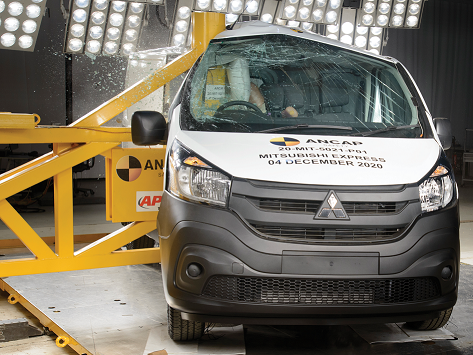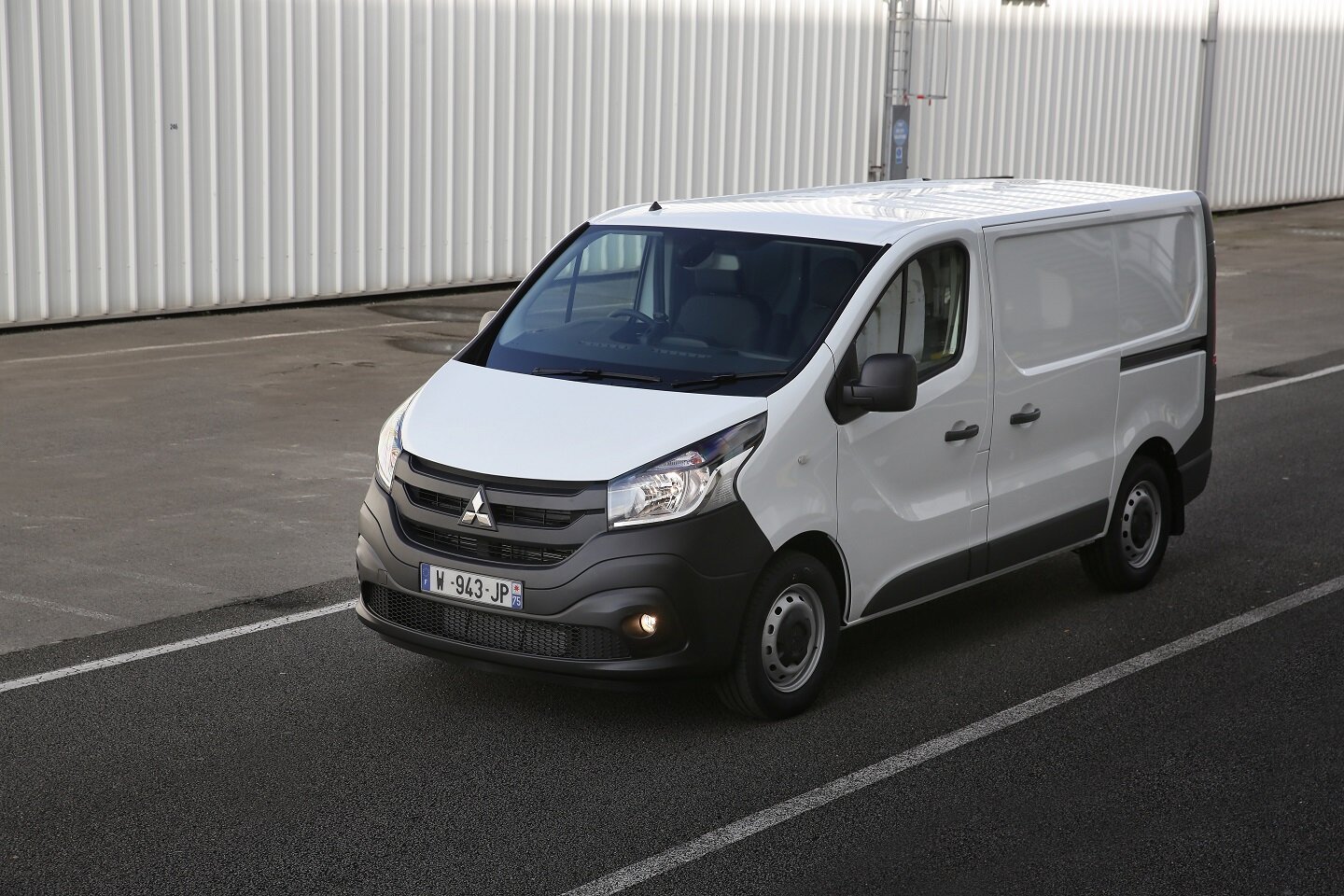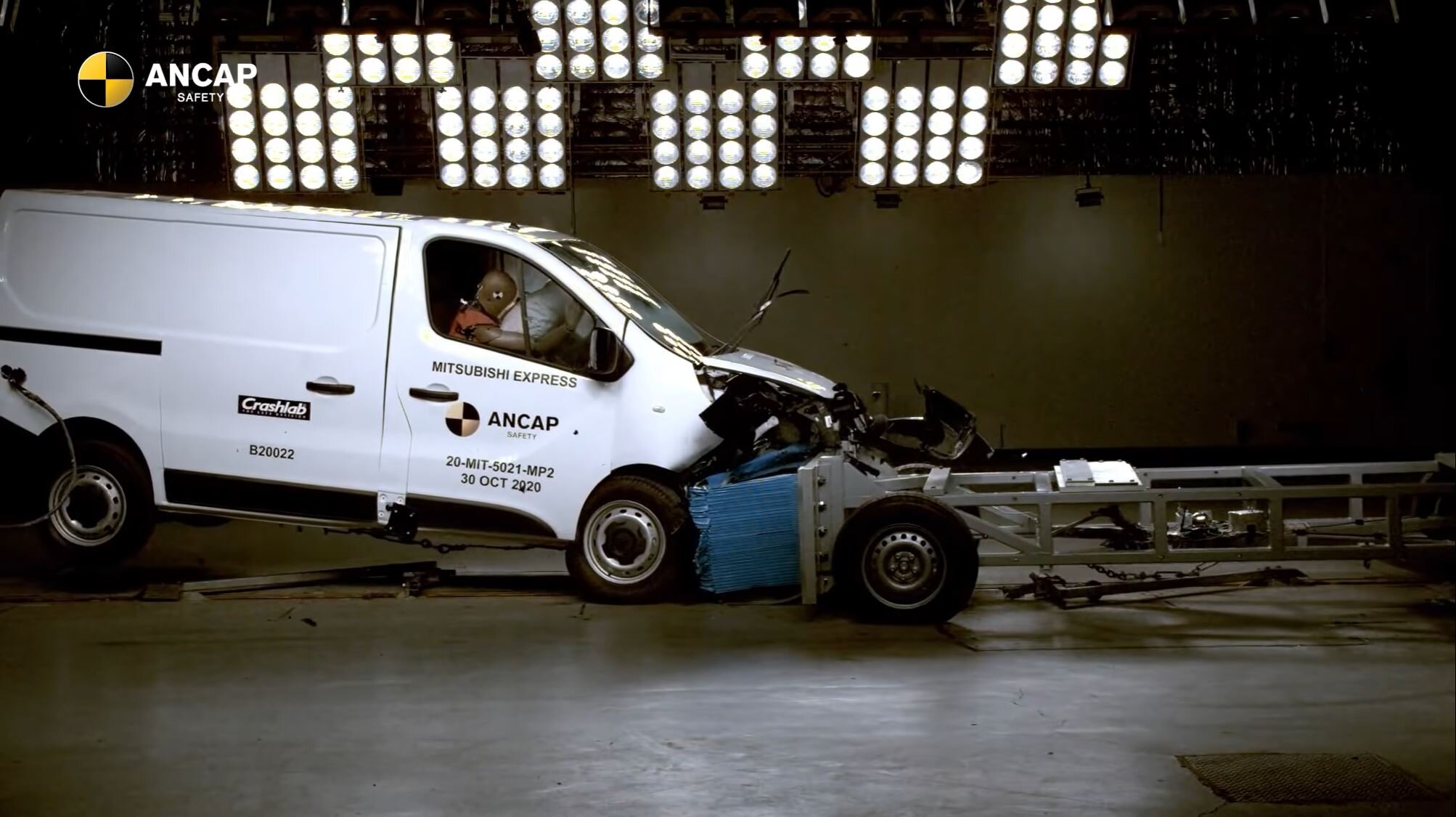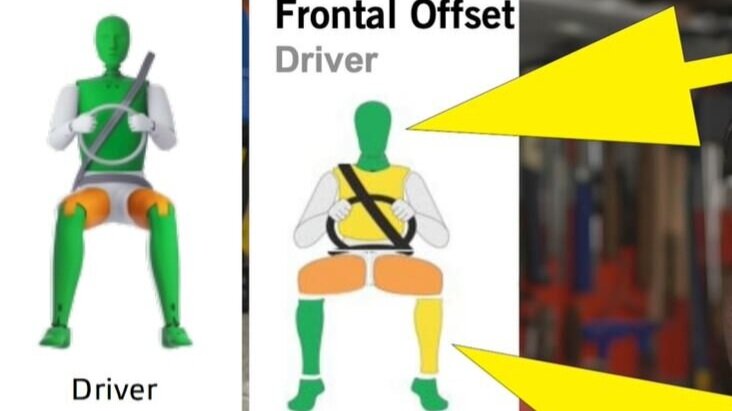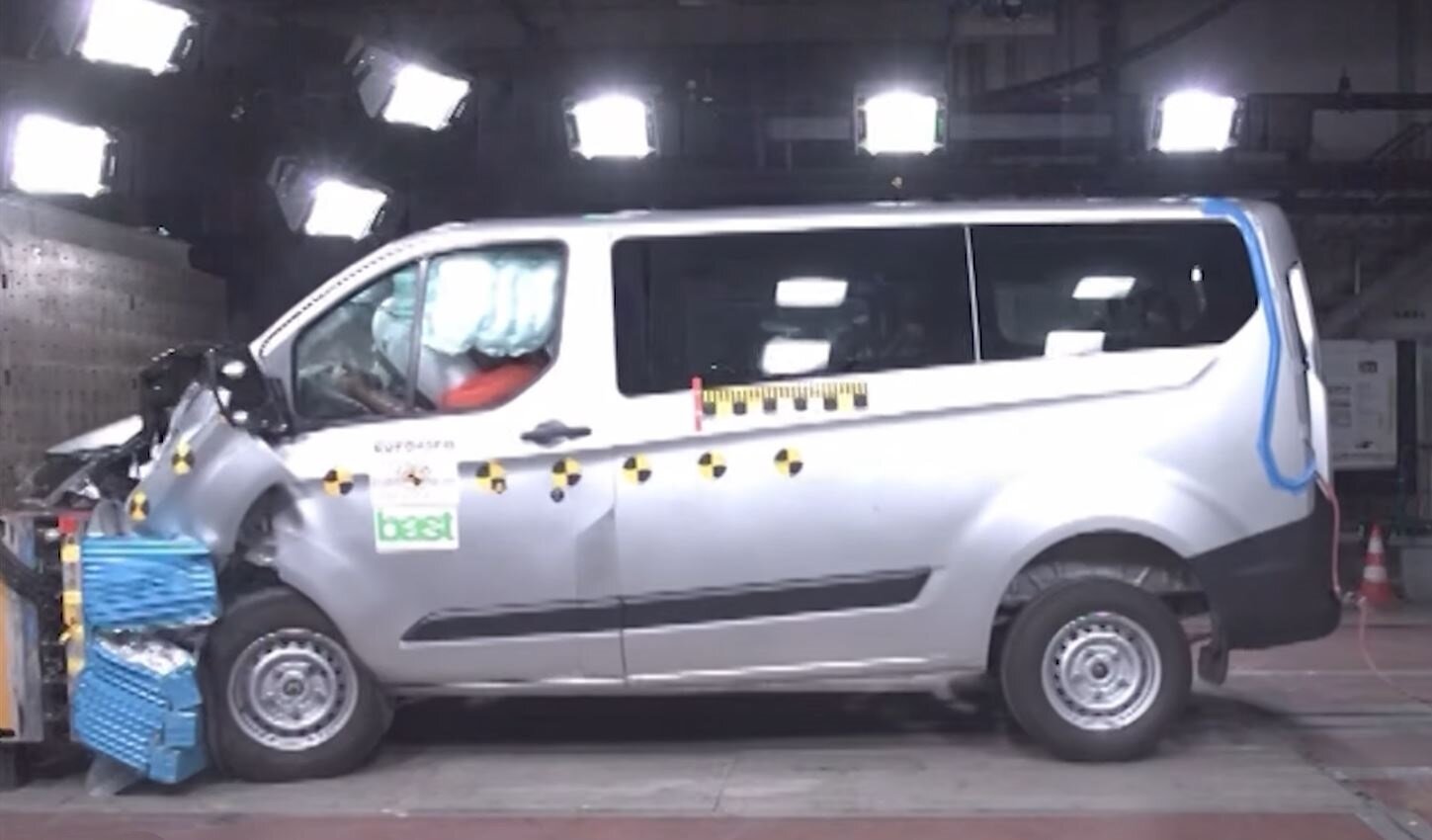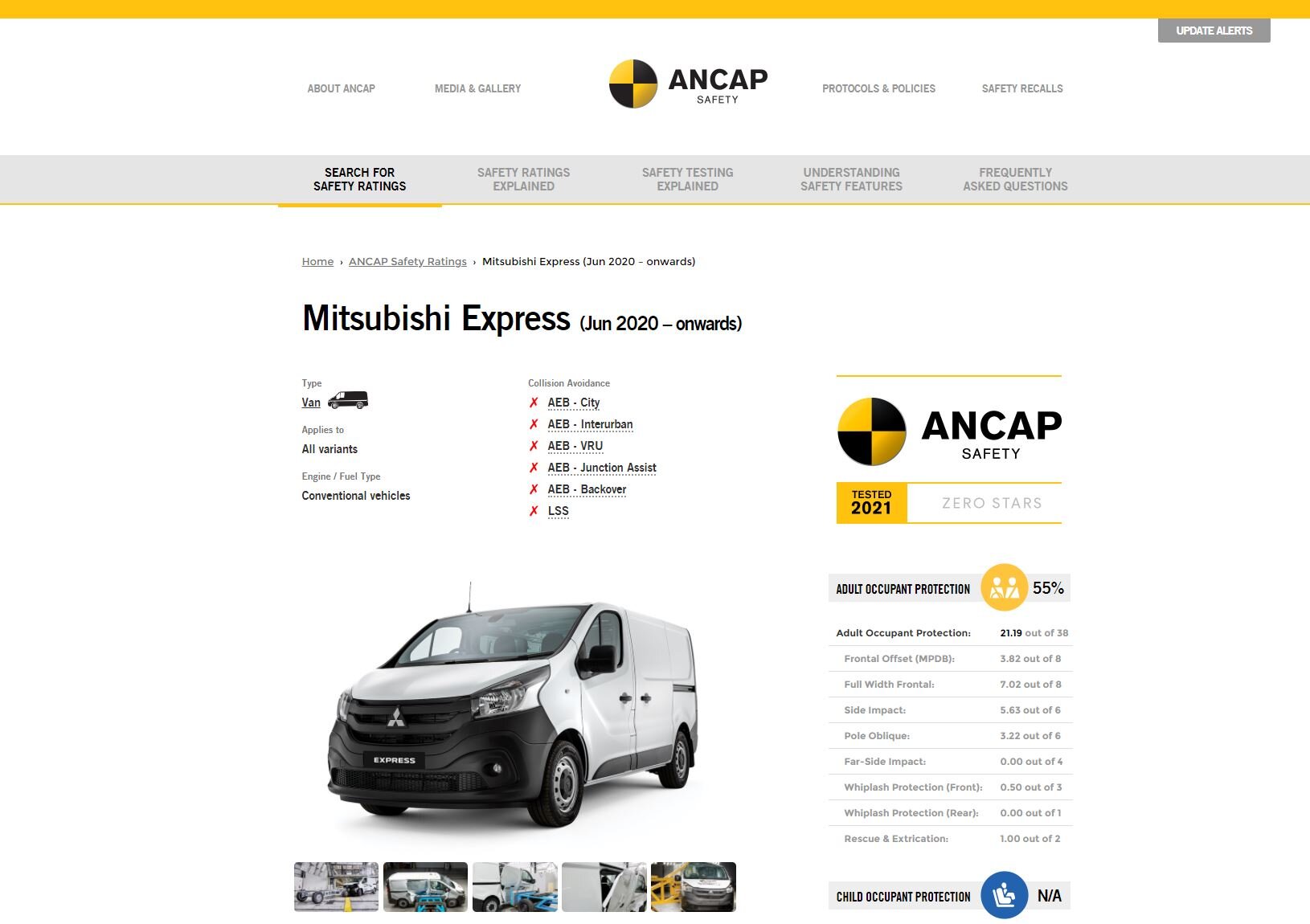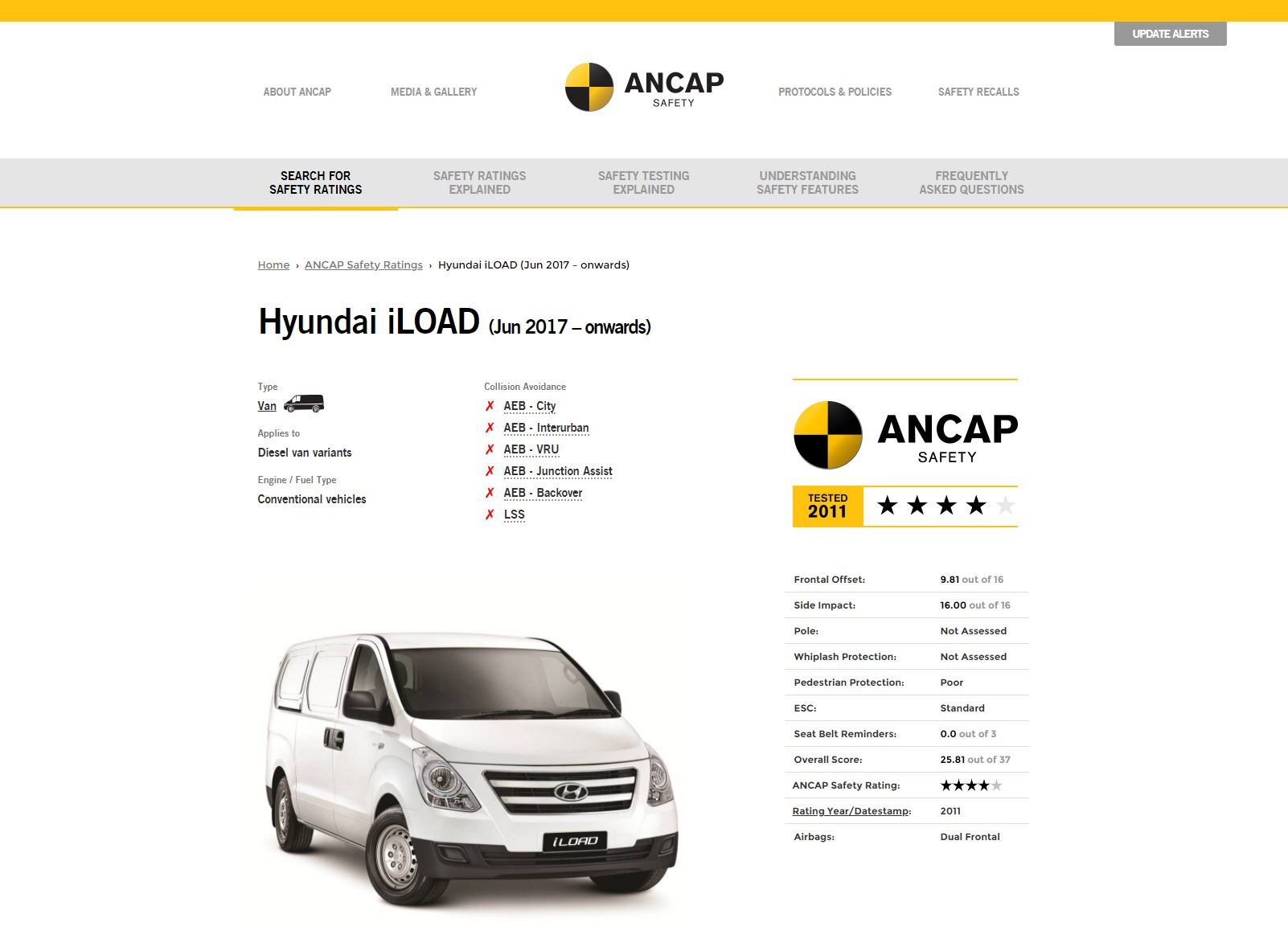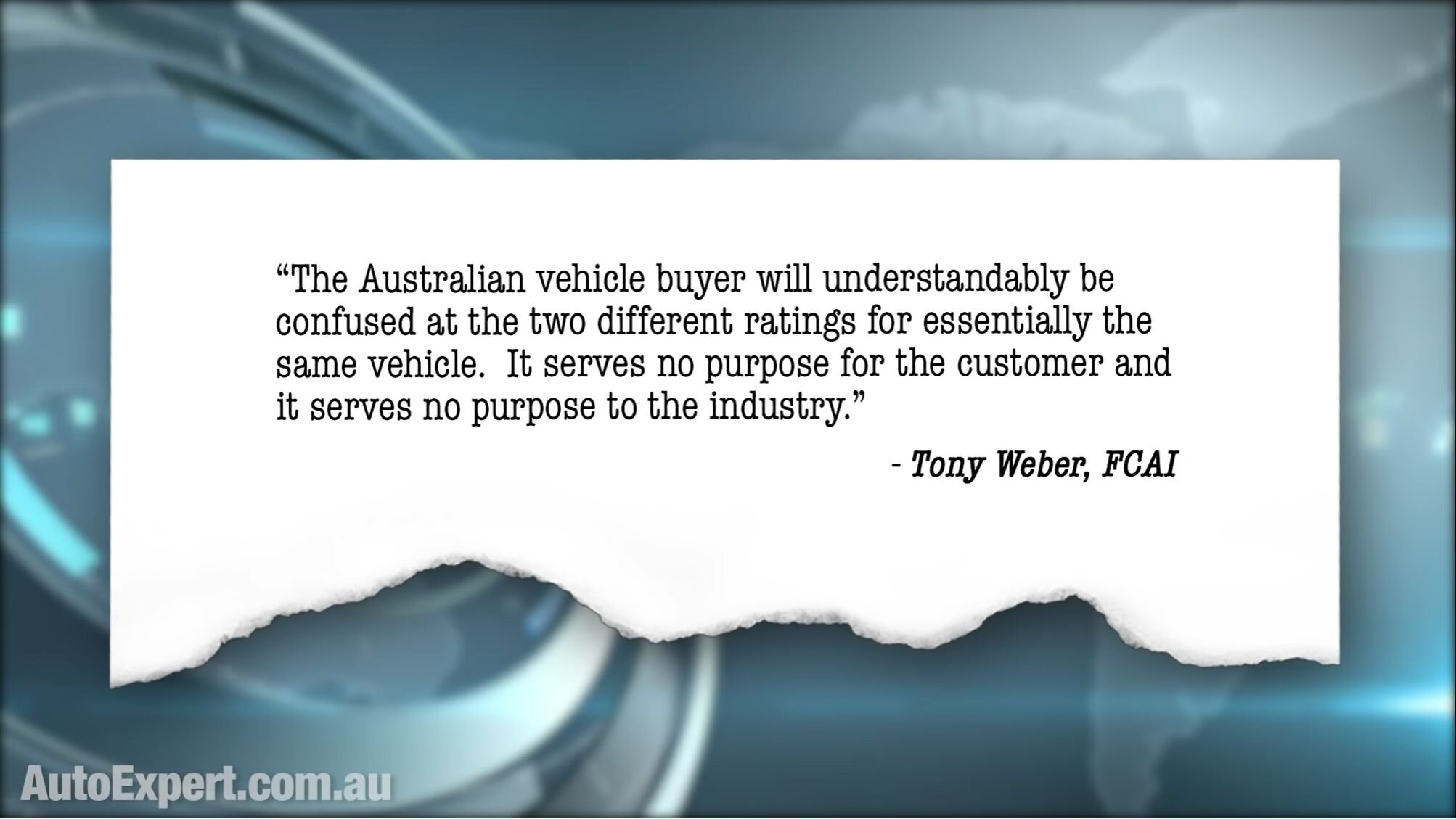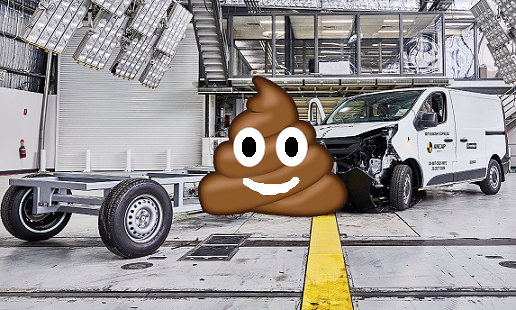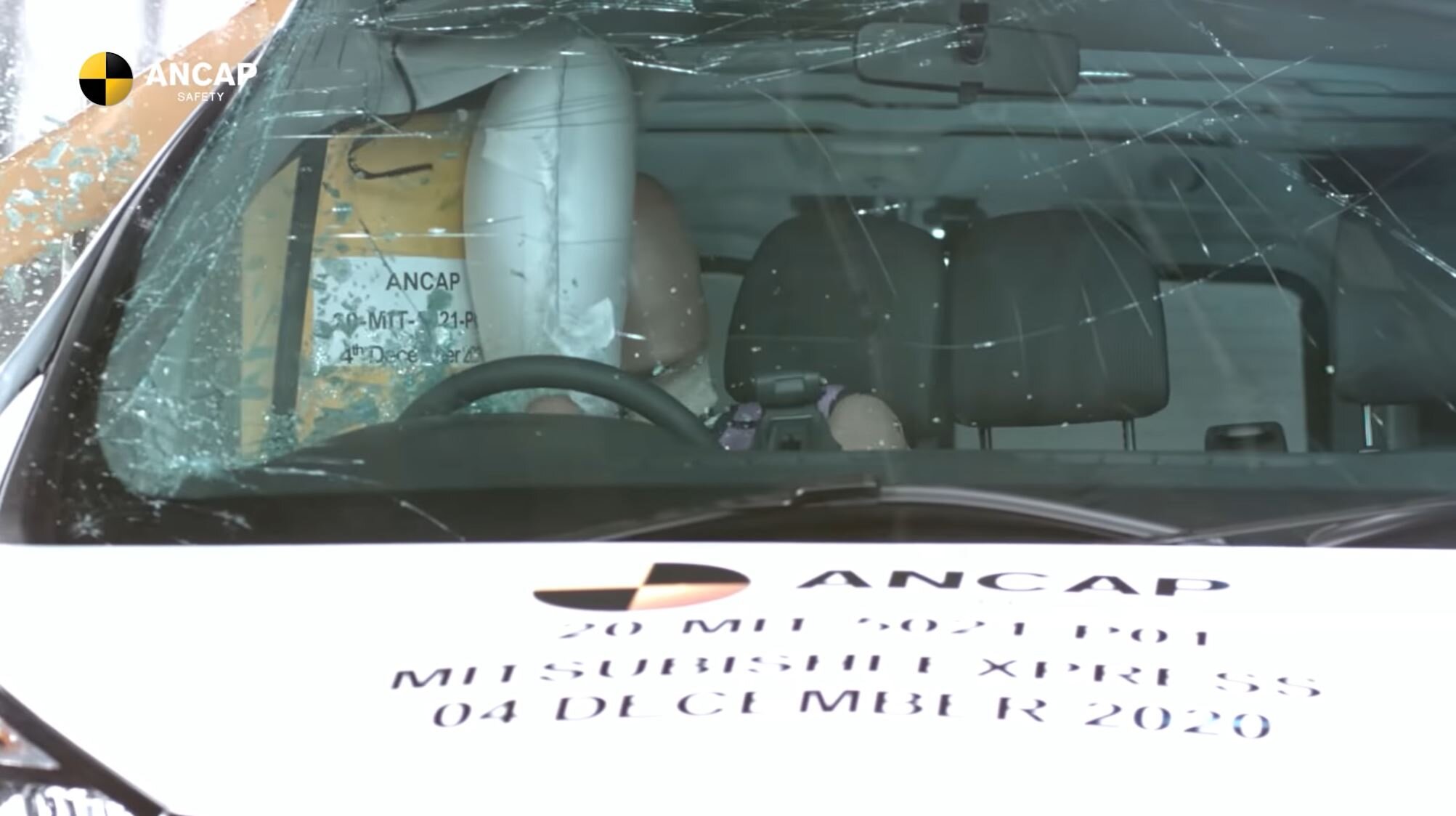The truth about Mitsubishi Express and its zero-star safety rating
Doubtless you’ve seen the mainstream media headlines. Zero stars for Mitsubishi’s new commercial van. Sounds pretty bad, right? Sadly, it’s just another ANCAP botch. Brace…
The Mitsubishi Express is fine - for a van. In the context of contemporary vans you can buy, it’s neither excellent nor terrible. I’d call it about average.
Details of my recent catatonic break in just a second. (Like, dude - if you had told me I’d experience this - ever - I would have eviscerated you, metaphorically. And here we are.) I literally had an out-of-body experience. Reality and I had a trial separation, researching this story.
You probably saw the news:
Aunty there, increasingly at risk of forgetting to do actual journalism. Like, who has time? They’re in a race with Costello’s crew and Uncle Rupert’s half-heroes over at NewsCorp.
That headline sounds pretty horrific, doesn’t it? Zero stars. Your default presumption is that the Express is a death trap. Especially when there’s a five-star Ford Transit Custom or a four-star Hyundai iLoad available, right?
I put it to you, however, that nothing could be further from the truth.
In this report I’m going to show you how ANCAP’s bullshit ratings system effectively misrepresents the safety of vehicles available to you today. And this is the perfect example.
FURTHER PROOF ANCAP MAKES BUYING SAFE VEHICLES CONFUSING
How ANCAP made choosing a safe car too hard >>
When ANCAP tested the Hyundai Tuscon >>
When 5 stars actually means 3 stars: Subaru Impreza >>
USEFUL (EASY) RESOURCES FOR BUYING SAFE VEHICLES (You’re welcome, ANCAP)
Is it safe to sit in row three of an SUV? >>
My AutoExpert AFFORDABLE ROADSIDE ASSISTANCE PACKAGE
If you’re sick of paying through the neck for roadside assistance I’ve teamed up with 24/7 to offer AutoExpert readers nationwide roadside assistance from just $69 annually, plus there’s NO JOINING FEE
Full details here >>
Who made who? The problems at ANCAP
You’ve gotta remember that ANCAP is partly taxpayer funded - so in my view, they’re pissing your money and mine up against the wall. The organisation has a moral responsibility here, to you and me, and, to me, they’re doing a very poor job.
The volleyball referee who runs ANCAP said:
Recently appointed CEO of ANCAP, Carla Hoorweg, to be fair, recently inherited ANCAP and its problems - she didn’t create them - but she did sign up for this.
I don’t know whose safety expectations she’s referring to, but I call bullshit on that statement. Who, exactly, attaches to ‘today’s’ safety expectations.
If it’s all the same to you, Ms H, I’d prefer you not to speak for me on this.
The Mitsubishi Express is a re-badged Renault Trafic, owing to the Renault-Nissan-Mitsubishi Alliance. This vehicle was first introduced in 2015.
As I see it, suggesting that it is recently introduced is at worst absurd and at best just a piece of disingenuous, barrow-pushing spin, more colloquially known as ‘bullshit’.
‘On Bullshit’, by Professor Harry G Frankfurt. Bullshit and lies are different things. It’s easier to respect a liar than a bullshitter, in my view. The bullshit bible, buy it here >>
Unfortunately, although she might have, Ms Hoorweg chose to keep going at the end of that last quoted sentence:
Substantially untrue, I’d suggest. ‘Par’ just means ‘equivalent to’. So let’s put that to the test. Apples for apples. Vans for vans. Is Express below par? Most vans have not been tested to current ‘vulnerable road user protection’ protocols - so how would we know?
When I see these shitbox vans driving around - and they have metastasized across the road network since COVID, owing to the boom in home delivery - they’ve got one dude in them, driving, and a shit-tonne of boxes inside. Or a tradie.
So I would make the case that this is the typical mode of operation for a vehicle such as this. Urban speeds. One dude. He’s the dude who needs protecting. The driver. In a life-threatening crash, which is likely to be a clipping head-on, not unlike ANCAP’s 64km/h standardised offset frontal crash, he needs protecting.
The Hyundai iLoad has a four-star rating, according to the technical report on ANCAP’s website. That’s for the current model introduced in June 2017. But it crashed worse than the Express, for the driver, in that test. I’ll show you.
Green is ‘good’. Yellow is ‘acceptable’ and orange is ‘marginal’.
Those dummy illustrations are a cut and paste from ANCAP’s and Euro NCAP’s technical reports. It’s exactly the same tightly controlled laboratory crash test in both cases: the 40 per cent overlap, frontal offset test at 64km/h, into a deformable barrier. Quite a severe test.
Renault Trafic (which is Express with different badges) on the left, Hyundai iLoad on the right. More orange equals ‘worse’ injury to the occupant. It’s really that simple.
Let’s do another popular van, the Ford Transit Custom. Current model. Five stars on ANCAP’s website. ANCAP’s results are a cut and paste of EuroNCAP’s, which found that the crash outcome for the driver of the Ford Transit Custom was once again worse than for the Trafic/Express.
But Ms Hoorweg keeps making even more ‘comment’.
Pro Tip: Use an ‘s’ after the apostrophe when the word finishes with an ‘s’.
The clear message being sent to global parent companies is that an insignificant private company with delusions of adequacy in an irrelevant market next to Dingo Piss Creek is screeching up at the night sky.
Renault sells about 185,000 vans in Europe annually. Mitsubishi is on track to sell about 800 Express vans. To a factory, this is like saying, “Take what you’re given. Get back to us when your balls drop.”
Express did not crash badly. In the standardised offset frontal crash test it protects the driver better than a four-star iLoad or a five-star Ford Transit Custom. Deal with it.
Express earned sufficient points for two stars on crashworthiness based on its so-called ‘adult occupant protection’ rating, but got zero because it lacks AEB and other so-called ‘safety assistance’ features, which frankly have yet to deliver real-world results.
You ANCAP dudes have just dropped the ball. Again. (An oddly apt metaphor in the circumstances.)
Here’s the thing: Hyundai did the iLoad’s hair and makeup in 2017. It’s a pretty old platform. The underlying vehicle was introduced in 2008. ANCAP decided to apply 2011 test scores to the 2017 and onwards models. So, today’s iLoad wears a 10-year-old four-star test score derived using 10-year-old crashworthiness standards, despite being introduced in 2017. So those tests are 10 years out of date, but the rating is ‘current’.
At least, it is proffered as if current. In other words it pops up in the search results on ANCAP’s website when you select ‘current models only’. I wonder how many people actually realise that ‘current models’ is not the same thing as ‘current ratings’ in ANCAP’s bullshit universe?
Ford did the Transit Custom’s hair and makeup in September of 2019. The underlying vehicle was introduced in 2014. Here in Australia, ANCAP decided to cut and paste Euro NCAP’s 2012 tests onto the late-2019 Transit Custom. So today’s Transit Custom gets a five-star rating that is nine years older than the vehicle itself.
But Express (which is six years old) got tested to all the current - and far more severe - test protocols despite being introduced as a Renault Trafic back in 2015. Any way you look at this, it’s 50 lashes with the spiked bull-whip for the Express, and a week on Poontang Island for the other two.
The former Soviet bureaucracy could not have done a worse job organising this.
Old, softer tests on current vans for Hyundai and Ford - as just two examples - and newer, harsher tests for the current Express/Trafic. Did you dudes at ANCAP have a fucking meeting about this, or did it just happen while you were all at the beach pumping up your balls?
ANCAP Score Card: Surreal
There are two main problems with all this.
Pretty obviously, ANCAP’s dog’s breakfast of ratings makes it very difficult for ordinary punters - like a delivery contractor, or plumbers or builders or garage door fitters or a fleet manager - to make an informed choice about which vehicles are actually more or less safe. And that really matters.
This isn’t an insult to tradies or fleet managers or whomever - it’s legitimately not your field of expertise to assess the safety of your next ute, or van or your next fleet of utes and vans.
You might not have high-level research and/or language skills if delivering boxes in the suburbs or crawing through cobwebs to locate the sewer line is your vocation. And that’s why someone, like ANCAP, has to make safety simple.
Remember the KISS principal you were taught at school? Keep It Simple, Stupid.
I have a degree in engineering, and it’s a long-winded, detailed pain in the arse for me to read all the fine print in ANCAP’s technical reports, and dissect the fundamental inequity of ANCAP’s frankly bullshit position here.
When I wrote the script for this video report, I had 17 Google Chrome tabs open on the desktop, contemporaneously.
Doing this would be simply beyond the research capacity of many people.
How do we actually know about Mitsubishi’s ability to deliver vehicles with high levels of overall safety? Express aside, ANCAP hasn’t actually tested a current model Mitsubishi since 2017. That was four years ago, and they only tested one Mitsubishi in that year (Eclipse Cross).
And you’ve got to go five years back to the next two current Mitsubishis that ANCAP tested - and none of those test protocols is current. So where’s the evidence underpinning this claim?
Hyundai gets four stars from ANCAP for the current iLoad. Yet the vehicle lacks autonomous emergency braking, lane keep assist, adaptive cruise, and blind spot monitoring. iLoad doesn’t even have a fatigue reminder, auto headlamps or daytime running lamps, according to ANCAP. It doesn’t even have a manual speed limiter, emergency brake assist or three-point seatbelts in all seating positions, for fuck’s sake. Four stars. Current model.
But if they tested it today: zero. Because, you know, details.
Mitsubishi Express actually has emergency brake assist, a manual speed limiter and three-point seatbelts all round. But gets zero stars. Current model. Go figure.
Mr McCormack’s somewhat empty suit stood in front of a podium on that day, and offered to cure the national insomnia epidemic by putting $6.6 million (AUD) in an envelope and hand it to ANCAP for the next five years - to continue ANCAP’s ‘fine’ work.
And that means I found myself agreeing with Tony Weber.
This is worse than admitting defeat. I didn’t see that one coming.
The Webster is, of course, the endlessly entertaining mouthpiece for the FCAI - the car industry’s Toyota-appeasing lobby group, which issued an oddly critical release.
I know. We were speechless when we saw that on Tuesday. And that very rarely happens to him. You know how Neo felt when his fingers went into the mirror? After taking the red pill? This moment was that; agreeing with TW.
This is how functionally insane ANCAP’s position is. It has nudged Tony Weber and I onto the same page.
Agreed.
That was the FCAI press release issued by their director of innovation and strategic engagement. Same job as I do here, basically, only with (his) pants on, a dude named Peter Griffin. I bet he can fight. #FamilyGuy.
In what could be an industry first, Tony Weber is dead right, in my view. ANCAP could simply have cut and pasted Euro NCAP’s rating for 2015 Trafic in the slot marked ‘Mitsubishi Express’.
The rating would then, at least, have been admirably consistent with their bullshit policy of pre-dating the ratings of the likes of iLoad and Transit Custom. Those 2012 ratings on 2019 vehicles sold in 2021. That’s not, like, totally confusing.
Mitsubishi Express is Renault Trafic. Renault-Nissan-Mitsubishi Alliance. It’s a thing. Euro NCAP already tested Express/Trafic. You don’t have to be a genius to figure this out.
Bold prediction time: This is the year that manufacturers start withdrawing their support for ANCAP and its increasingly indefensible - some would say ‘bullshit’ - policies. Policies certain to increase ambient punter confusion, and which seem only reconcilable with the dogshit-dumb mainstream media and its insatiable proclivity for whipping up fear-mongering clickbait crap.



